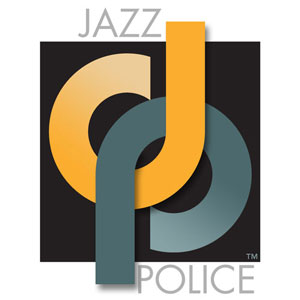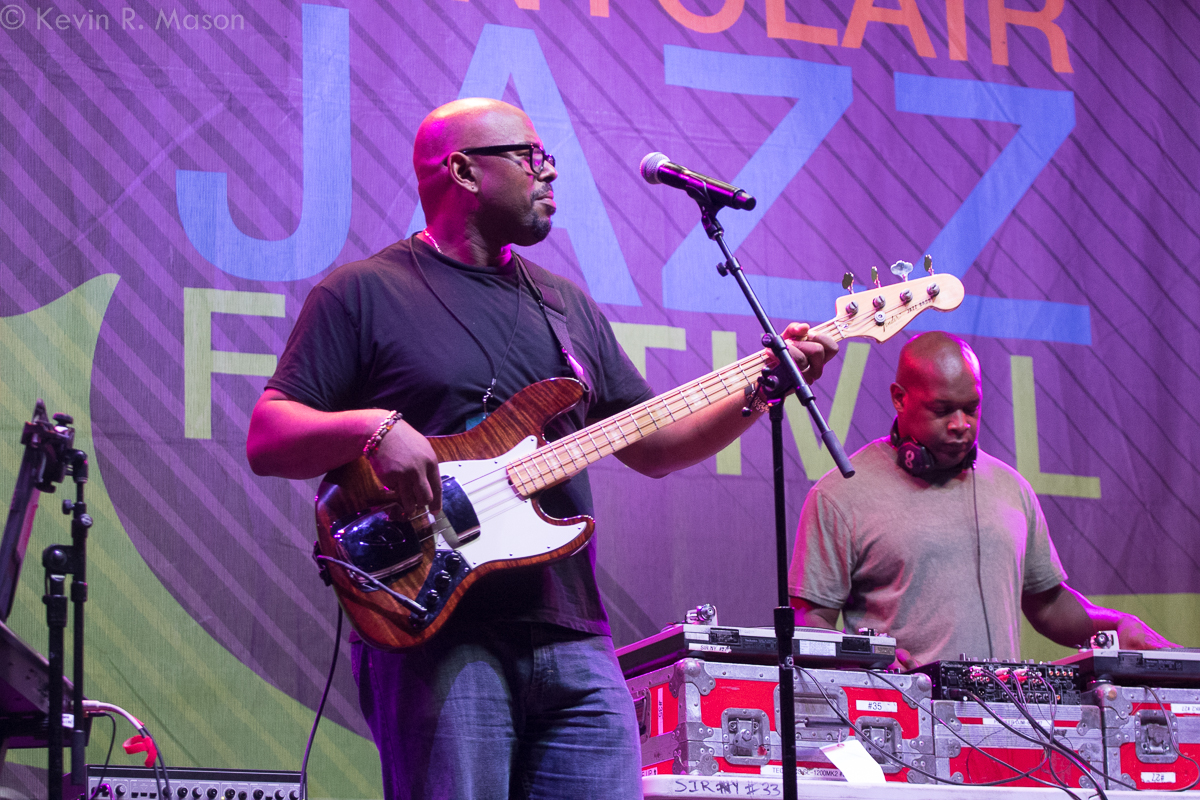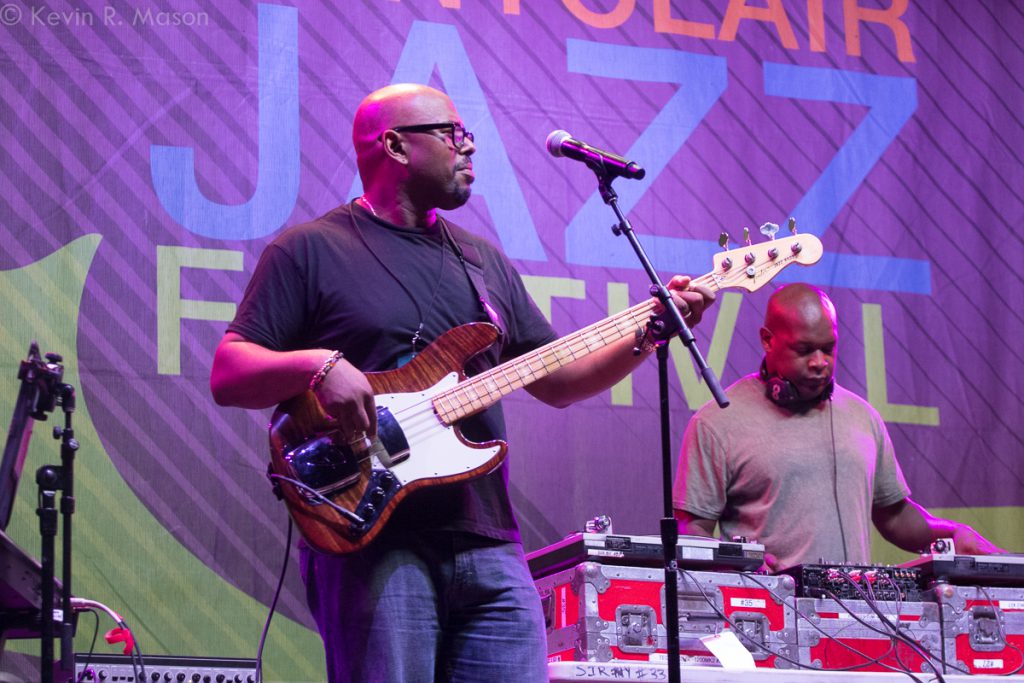 Christian McBride and DJ Logic © Kevin R. Mason
Christian McBride and DJ Logic © Kevin R. Mason
On Wednesday, May 20, the National Jazz Museum in Harlem presented an online concert by the CRIB Collective, curated by Museum Artistic Directors Jon Batiste and Christian McBride. This one-hour concert showcased some of the Museum’s broad community of artists.
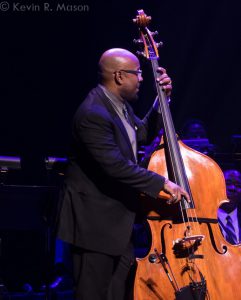
Christian McBride got things started by saying, “Good evening ladies and gentlemen. Welcome to our CRIB Collective concert, curated and presented by Museum Artistic Directors Jon Batiste and myself, Christian McBride.” He announced some of the participants, pianist Sean Mason, composer/pianist David Durrah, Joel Ross on vibes, Endea Owens on bass, Jason Marshall on baritone saxophone, and the Harlem legend Bill Saxton playing tenor saxophone. McBride continued, “Lately, as many of us in the jazz community have been thinking about what jazz means in these present times, we’re reminded of the words of writer and jazz critic Ralph Ellison. He described the blues as the ‘impulse to keep the painful details and episodes of a brutal experience alive in one’s aching consciousness, to finger its jagged grain, and to transcend it.’ This sense of optimism in the face of adversity or transcendence has its roots in the Black experience, but it resonates globally across geographic and social boundaries…Our first artist of the evening brings together experiences from Chicago to Havana, to the tree-lined streets of Brooklyn. Jazz knows no borders. The music bursts with the flavors of cultures and communities from around the globe. This can be so clearly seen in the musical artistry of Cuban-born artist Melvis Santa. As a singer, composer, actress, pianist, dancer, educator, bandleader, Melvis Santa approaches music holistically, infusing elements of movement and spirituality from the African diaspora into her art. Since moving to New York City in 2014, she’s immersed herself in the jazz community, playing at some of the most well-known spots that the city has to offer, Blue Note, The Jazz Gallery, and Django, while also staying true to her roots.” Melvis performed a lively and affecting rendition of “Perdido,” accompanied by David Virelles on piano.
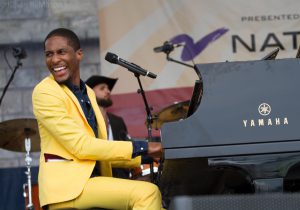
Then Tracy Hyter-Suffern, Executive Director of the Museum, was joined by Christian McBride and Jon Batiste. She said to the virtual audience, “I’m so pleased that you’ve decided to join our CRIB Collective celebration tonight. I’m here with two of my most favorite people in the world tonight, and the Museum has been fortunate enough to have both of them, both of these visionaries to work with us, to help shape our education, exhibition, performance, and all of our programming. Of course, there is the extraordinary bassist, composer, bandleader, and friend, Christian McBride. He’s our host tonight. And with us is my other friend, the extraordinary pianist, composer, bandleader, Jon Batiste. I’m so happy that you both decided to join us tonight.” Tracy continued, “Christian, you’ve been part of the Museum since 2007. Will you tell us a little bit about how that happened?” McBride replied, “Sure. It actually goes back to 2004. Our dear friend, the great Loren Schoenberg, we were teaching together in Aspen, Colorado, and he told me about this project that he and Len Garment were putting together…Of course, Leonard Garment (former White House lawyer), being like the real motor that made this happen, almost 20 years ago. And Loren said, ‘Listen, I love the way we work together. Help me build this Museum in Harlem.’ And, uh, that’s pretty much how it started. Once we got back from Aspen, we went around to all kinds of institutions, all around Harlem, and we tried to create a groundswell of support for the Museum…Our early programming involved ‘Harlem Speaks,’ ‘Jazz For Curious Listeners,’ ‘Jazz for Curious Readers,’ and those early days were very, very special. The only thing that is going to be more special than those early days is the future.”
Ms. Hyter-Suffern said, “I’ll take that, the future and the present. Thank you so much. We’re all so grateful that you decided to join with us in those early years, Christian.”
Tracy continued, “And now Jon, please tell us how you came to be such an integral part of the Museum as well.” Jon responded, “Funnily enough, it started for me in Aspen, as well. I was there, I was 16 years old, and I went to the Aspen camp that Christian and Loren were the heads of. It was the first time I heard Christian, and I called my dad and I’m like ‘Man, I’ve heard the best bass player I’ve ever heard, in the world’…This program was so awesome, and Loren and I really connected…The following year when I turned 17, I moved to New York to go to Julliard. He was teaching the history program at Julliard, and I kept in touch with him from the Aspen program, and he was really, really just a mentor for me in terms of shaping my conception of how the music came to be. I really, really connected with him in that way, and that turned into him asking me to join him when he would teach at different colleges or different master classes that he would do. And then, about the time I was 19, he asked me if I had any ideas of programming that I wanted to present at the Museum. So that was the beginning…A couple of years after that we used to do it at the church basement, the Visitor’s Center, and you know, that was amazing, because from there I started to meet all kinds of people. That’s where I first met Lenny Kravitz, where I first met Questlove. I mean, all these people would come to the Museum. So, I agree with Christian. The future is bright. We’re going somewhere with this.”
Christian chimed in, “Hey Tracy, can I tell you a quick story about that Aspen camp?…One of the great traditions of that summer camp in Aspen is that we would have a student/teacher/faculty flag football game at the end of the program I have the greatest photo in the world of Jon. He’s running down the field with the football, and somebody has an armful of his shirt. You can’t see who the person is, you just see Jon running down the field with an arm grabbing the back of his shirt. It’s like it’s the greatest picture, ever. I gotta bust that out.” Tracy responded, “You have to find it, and we have to make an exhibit of it in the Museum.” The three laughed, and Christian added, “McBride and Batiste on the gridiron!” Tracy said, “Well, it has been a thrill to work with both of you. I can’t thank you enough for everything you’ve brought to the Museum, making it feel like home, making me feel at home. I can’t imagine who we would be or what our success would be, without you.”
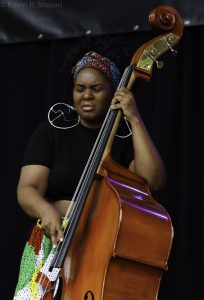
Christian replied, “Well Tracy you know…we are family, and we’re here for the long run. In thinking back about all the programming we’ve done as Artistic Directors, Jon and I talked about how having opportunities to curate shows here at the Museum at a young age helped us tremendously in our broader careers in music. So after these discussions, the Museum made it a priority to actively look for ways to give younger artists more opportunity to curate shows and experiences…So this summer, we will be launching our ‘Jazz Is Now Curatorial Fellowship,’ a year-long opportunity for two emerging artists who will work together collaboratively to present shows and other programming.” Jon added, “It’s really a pleasure for us to present our two Curatorial Fellows, bassist Endea Owens, who hails from Detroit, and vibraphonist Joel Ross, from the southside of Chicago. Both are among the most exciting and technically advanced, conceptually advanced musicians playing today. Endea is a graduate of the Julliard School, and she was a part of Lincoln Center’s Emerging Artists in 2019, and also a part of the band with me on The Late Show. She’s been doing some amazing things, including a music exchange program in Cuba, Trinidad and Tobago, and has performed in London, India, Australia, and many other countries. In her early 20s, by the way, just so y’all understand. Her performance roster includes working with people like Dee Dee Bridgewater and Marc Cary, and Endea plays with so much exuberance and swing, her playing is magnetic. I can attest to that, seeing her play five nights a week. Every time she plays, the audience erupts! And Joel Ross, oh my goodness! Joel Ross is beyond, as a musician. NPR calls him ‘The breakout jazz star of the moment,’ and I would say that’s right. Last year, he released a solo album on Blue Note entitled Kingmaker, and his group, Good Vibes, which is the very sentiment you get from listening to him perform, is just a vehicle for him to be a revolutionary musician, and really evolve the form, taking the vibraphone, playing so many things, I mean, I’ve never heard before. He’s played with numerous musicians, including Marquis Hill, Marcus Evans, Etienne Charles, and Walter Smith III.” Jon continued, “These are two of the best people we could have possibly chosen, and if you come to the Museum frequently, you’ve probably heard these two playing over the past couple of years…Stay tuned and find out what they have in mind for the Fellowship.”
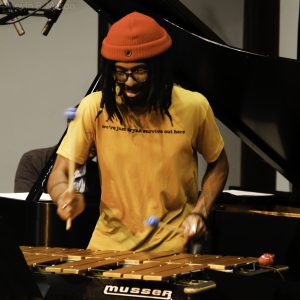
Then there was a live duet of Endea and Joel, in separate locations, playing a beautifully introspective tune, “Peace” by Horace Silver. When they finished, Christian responded, “Whew! That was good, wasn’t it? Endea and Joel, thanks for sharing your music with us, and we look forward to seeing what you have coming up at the Museum. It’s gonna be great! Next up we have master pianist, composer, and bandleader, Mr. David Durrah, who has been in the music business for over five decades. A native of Cleveland, Ohio, it was there where he formed a solid musical foundation that has carried him throughout his career. In Cleveland, he backed up touring blues musicians like Lightnin’ Hopkins, Junior Parker, Bobby ‘Blue’ Bland, and BB King. After leaving Cleveland, David went on to play with an impressive roster of jazz and blues artists, including Sonny Stitt, the ‘Godfather of Soul’ Mr. James Brown, Etta James, Cab Calloway, Dizzy Gillespie, Archie Shepp, Willie Bobo, and Tito Puente. For the past 20 years, David has been living and making music in Harlem. Here, at the National Jazz Museum in Harlem, for the past five years, he’s been the host of the ‘First Saturday Jam Sessions,’ where musicians and people of the jazz community have the opportunity to learn from and enjoy this Harlem icon. So, let’s hear David Durrah play his original tune, “Let My People Go.” Durrah played and sang his protest song with a lot of passion and energy.
Larry Blumenfeld came on next and said, “I write about jazz and culture for the Wall Street Journal and many other publications. For more than a decade now, I’ve been hosting and creating programs for the Jazz Museum in Harlem.” Blumenfeld was joined by Gargi Shindé, who said, “I’m the Director for Jazz at Chamber Music America.” Larry and Gargi had a conversation, with Larry saying, “Gargi, the last time we saw each other was at the Jazz Museum in Harlem, and I know you did a panel for me in which we discussed improvisation as a political act, which was really valuable to me. You know, one of the reasons why I love my association with that place for over a decade, is that it lets me do things as a writer that I can’t do on the page, and lets me explore ideas that I need other people…to help me explore. I know it’s been an important spot for you, too.” Gargi replied, “You know, I was a resident of Harlem, before I left the city, way before the pandemic. The Museum there is that very, very unique community space, which is not only about preserving a kind of musical tradition, but telling the stories that come through there. Through those stories, you get to know the community better…I was in India, visiting my grandmother, just last Thanksgiving, which will probably be a long time before I can do that again. I was at a museum there, which was the Raja Dinkar Kelkar Museum in Pune, where my grandma lives. The amazing thing about that museum is…that the museum was a result of a private Indian collector, and that was so important, Larry, because he had amassed most of these artifacts at the time India was receiving its independence. It was also the time when the British were taking away a lot of the artifacts from India…So it was a very bittersweet and emotional moment for me to be in that museum, because I got to learn what we had lost. Looking at those artifacts and those little items of everyday use and everyday lives…in a lot of ways, the museum not only showcases the unique characteristics about the culture, within it, we get a sense of what is lost, as well. And I think that is the beauty of the National Jazz Museum in Harlem, is because we get a sense of the stories of this very ethereal artform of jazz and jazz history.”
Larry exclaimed, “You always, every time we talk, you take me so many places. You know, I’m a Brooklyn boy, born and bred. I still live in Brooklyn. But I’ve taken that…hour and a half commute to the Museum over and over again. In a funny way, it’s helped me connect with other places, with New Orleans, and what that tradition of jazz means there today, or with Cuba, and exploring what Afro-Cuban traditions mean, transplanted here in New York. Right now, I can’t be with you in person, we can’t sit together, and we can’t listen to live music. In a way, isn’t it making you appreciate these kinds of spaces and these contexts for our culture more, because of this remove?” Gargi replied, “I have to confess Larry, I’m a little saddened because I feel there is a fragility around these spaces now. There’s a fragility around the activities, around the people, around the history of these spaces…But I am naively hopeful that we will come back.” Larry said, “I’m definitively hopeful, and I think we will be hopeful…I think a space like the Museum helps not just present music, but gives it the kind of context you and I spend a lifetime trying to understand and trying to share. I feel like now, more than ever, on the one hand, it’s important to stay connected with places like the Jazz Museum in Harlem, through these sorts of means. I’m waiting for that moment when we can be back, sitting there with people who show up, to do whatever we’re gonna do there.” Gargi concluded, “I’ve spent such great time getting to know, not just the Museum, but also the wonderful people who keep the space alive, and continue to celebrate this music by performance, discussions around it, film screenings, and everything.”
McBride said, “Gargi, Larry, thank you very much for your ongoing support.” Christian continued, “When asked to speak about himself in a 2012 interview, saxophonist Bill Saxton responded, ‘There are many sides to me.’ Indeed, this rings true. He is not only a notable Harlem staple, but also an international jazz ambassador, composer, mentor, husband, friend, and much more. He’s played with a slew of jazz giants, Tito Puente, Mongo Santamaría, Clark Terry, Pharoah Sanders, Jackie McLean, just to name a few. As a true keeper of the flame, in 2006, he and his wife opened Bill’s Place, New York’s only jazz speakeasy, on 133rd Street in Harlem. Few spaces rival the electric energy that hops through the air in that small and intimate club. Bill has also mentored some of the most exciting young players today, including Lakecia Benjamin, Camille Thurman, and Darrell Green. His students and mentees freely shout his praises. Singer/saxophonist Camille Thurman describes him as a key figure in the music community who is always open to sharing wisdom. She remembers how he supported her early on in her career. She said, ‘Bill was one of the cats to open his door and teach me the real tenor language.’ To her and many others, Bill Saxton is fiercely committed to keeping the art and soul of jazz alive. Here’s Bill Saxton playing “Fifty Six.” Saxton’s solo performance was driving and full of energy.
Lolita Jackson, vocalist/clarinetist/saxophonist, spoke about her influences, and discussed all the opportunities that the Museum offers. She said, “I’m one of the newest members of the Board of Trustees here at the National Jazz Museum in Harlem. I became a Board member because the work that’s done here at the museum is so important in helping to share not only in the music, but the rich history and culture that surrounds the music. For over 100 years, music from Black musicians has been on the forefront of creative innovation here in America. Jazz has profoundly influenced my life. I grew up playing bass clarinet and tenor saxophone, and have now been a singer for 35 years. Jazz provided me with an outlet to express myself when I could not find words as a younger person. Since that time, being steeped in the music has influenced my world view, to understand that jazz is a portal to shape and shift the society around us for the better. People like Nina Simone, Herbie Hancock, and others haven’t just gifted us with great music, they have helped change the world. The life lessons and sheer joy provided by jazz are a core part of my existence, have lifted my spirit, and continue to do so. On any given day, you can come to the Museum and experience a life-changing moment for yourself. It might be visiting with one of our docents, discovering music in our exhibition that turns you on to a new artist, or sitting in one of our education workshops and seeing an eight year old dancing and grooving to the music of Cab Calloway or Nicholas Payton. We hope you’re enjoying the show tonight, and remember, this is one of several CRIB Collective shows that we will be presenting. So, keep in touch, become a member, and come visit us at the Museum when this is all over. Thank you so much.”
Sam Mayer, the newest member of the Board of Trustees, said, “Thank you for sharing that great story, Lolita. I feel truly honored to be here with you all tonight. To say music is powerful doesn’t do it justice. Music is the world’s most widely spoken language. Music inspires us, it heals us. When we’re happy, we celebrate with music, and when we’re not, the right music is always an antidote. For as long as I can remember, music has brought me solace. As a curious seven year old, I remember sneaking downstairs on weekend mornings to listen to my parents’ Motown records. As a confident teenager, I remember reveling in playing guitar with as many bands as I could, and really exposing myself deeply to jazz for the first time, and religiously studying every note Charlie Christian played. As a professional, jazz has been a support to me every step of the way, and now as a parent, it’s a language I get to teach my own children. It really is incredible to see these world-class artists, many of whom you may be discovering for the first time tonight, come together and share their gifts with the world. We’re so grateful to every single one of you and stand by you in this difficult time. From everyone here at the National Jazz Museum in Harlem, thank you for all you do and bringing us joy. We are your champions, and we’ll do everything we can to keep the music playing.”
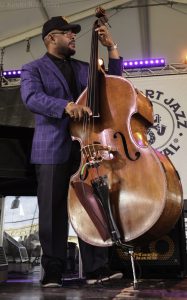
Christian McBride returned and said, “Sean Mason has a lot to say. Through the rumble of his fingertips, Mason pays tribute to the rich history of jazz piano, while also imparting his own personal flair. Originally from Charlotte, North Carolina, in the past year he moved to New York, where he’s garnered a steady buzz. Everybody’s digging him! Currently, he’s a student at Julliard, my alma mater, and he leads his own trio. Enjoy this absolutely dynamic version of “My One and Only Love.” Sean Mason’s gorgeous and touching version was a treat for the ears.
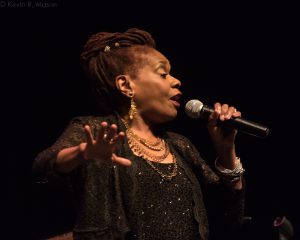
Tracy Hyter-Suffern responded to Sean’s piano solo by saying, “Thank you so much, Sean Mason. I can barely speak, my heart is so full right now…Our final performance features the National Jazz Museum in Harlem’s two incredible Artistic Directors, bandleader with The Late Show With Stephen Colbert, Grammy nominee, composer, pianist Jon Batiste, and multi-Grammy winner, bassist, composer Christian McBride. They’re joined by the Grammy winner and critically acclaimed singer, the legendary Catherine Russell. Ms. Russell is the rarest of entities, a jazz and blues singer who can sing and interpret anything. They’re joined by saxophonist Jason Marshall, who said, ‘I gather the pieces of our fractured history together, in the vibrations of our ancestors, that we might fashion an accurate map of the way forward, together.’ Here, they offer a Duke Ellington classic, “In a Mellow Tone.” Although they were separated due to quarantining, they were really tight, and sounded like they were together in the same room. It was a truly excellent, joy-filled finish to this outstanding event.
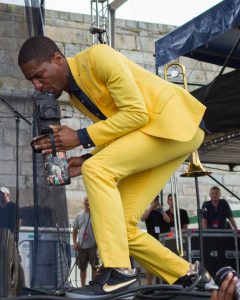
Jon Batiste said, “We hope you enjoyed our rendition of “In a Mellow Tone” by the great Duke Ellington. You know, great music can help us stay mellow during these crazy times, and we can’t wait to welcome you back to the Museum to share some great music with us, in person.”
Tracy Hyter-Suffern concluded the event, saying, “Well that’s it. That’s us, y’all! All of us at the National Jazz Museum in Harlem thank all of you for joining us from your own special corners of the world. We hope you had as good a time as we all had. Your presence has been our pleasure and our medicine. Just before we all sheltered at home, I had the joyful experience of meeting Lauren Cox, an extraordinary choreographer, dancer, and teaching artist. I hope she won’t mind if I paraphrase something she posted a few weeks ago. It stays with me, even now. ‘Remember, in the days when everything stopped, when we all paused, we all turned to artists.” If you would like to support the Museum, and our efforts to keep these artists and other artists working and creating…go to www.jazzmuseuminharlem.org/donate.”
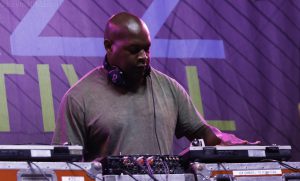
The CRIB Collective event was followed by an Instagram after party by DJ Logic, @thedjlogic.
About the Jazz Museum in Harlem
On the website, it says the following:
Our mission is to preserve, promote and present jazz by inspiring knowledge, appreciation and the celebration of jazz locally, nationally and internationally.
The National Jazz Museum in Harlem is a thriving center for jazz that stimulates hearts and minds, and reaches out to diverse audiences to enjoy this quintessential American music. The Museum, a Smithsonian Affiliate, was founded in 1997 by Leonard Garment who was Counsel to two U.S. Presidents and an accomplished jazz saxophonist, Abraham D. Sofaer who is a former U.S. District Judge who gave the initial gift in honor of his brother-in-law Richard J. Scheuer, Jr., and matching funds from the Upper Manhattan Empowerment Zone.
The Museum is committed to keeping jazz present and exciting in the lives of a broad range of audiences — young and old, novice and scholar, artist and patron, enthusiast and curious listener. Each year, the Museum produces and presents nearly 100 free programs in New York City, engages hundreds of professional jazz artists and reaches nearly 20,000 people from around the world. We are a hub for live performances, exhibitions, and educational programs, and are home to our widely acclaimed Savory Collection, which includes more than 100 hours of live recordings of jazz legends made from New York City radio broadcasts aired between 1935 and 1941.
2013 began an exciting new era for the Museum. We created and implemented a new strategic plan that made education central to our mission. The Museum now offers year-round educational programs for students of all ages. We also developed a new membership program with exclusive content and benefits to reach out to the worldwide jazz community.
In 2015, after 15 years at our East Harlem location, we moved to our present location at 58 West 129th Street in Central Harlem. Our space is designed to give our visitors an immersive jazz experience in the heart of Harlem’s new cultural and entertainment district.
Our long-term goal is to secure a permanent home in Harlem with space large enough to showcase our collection of Harlem’s vast contributions to jazz, American music, and world history.
In order to learn more about the National Jazz Museum in Harlem, or to donate to their future endeavors, go to: www.jazzmuseuminharlem.org.
